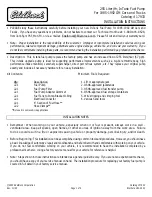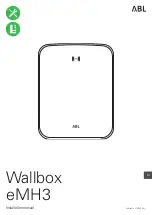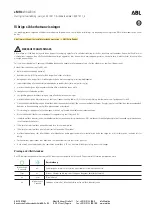
FORESTER (NA) A8050BE–A (ENG.)
8-14
Your vehicle is equipped with “all season tires” which are designed to
provide an adequate measure of traction, handling and braking perfor-
mance in year-round driving. In winter, it may be possible to enhance
performance through use of tires designed specifically for winter driving
conditions.
If you choose to install winter tires on your vehicle, be sure to use the
correct tire size and type. You must install four winter tires that are of the
same size, construction, brand and load range and you should never
mix radial, belted bias or bias tires since this may result in dangerous
handling characteristics. When you choose a tire, make sure that there is
enough clearance between the tire and vehicle body.
Remember to drive with care at all times regardless of the type of tires on
your vehicle.
J
Tire chains
Driving on snowy grades or icy roads may require the use of tire chains,
in which case put the chains on the front wheels only. Use only SAE
class S type chains that are of the correct size for your tires so as not to
damage the vehicle body or suspension.
When driving with tire chains, drive at speeds below 19 mph (30 km/h).
When a temporary spare tire is on a front wheel, replace the temporary
spare tire with the rear tire on the same side of the vehicle, and then fit
chains on the front tires.
Always use the utmost care when driving with tire chains — overconfi-
dence because you are driving with tire chains could easily lead to a
serious accident.
J
Rocking the vehicle
If you must rock the vehicle to free it from snow, sand, or mud, depress the
accelerator pedal slightly and move the selector lever back and forth
between “D” and “R” repeatedly. Do not race the engine. For the best pos-
sible traction, avoid spinning the wheels when trying to free the vehicle.
When the road surface is extremely slippery, you can obtain better trac-
tion by starting the vehicle with the transmission in 2nd than 1st (both for
















































